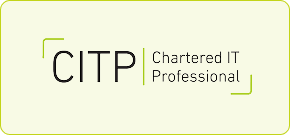It’s a simple sounding question with many complex answers. A panel of BCS experts asks ‘What is hybrid working?’ and discusses ways we can all leverage the approach to achieve its benefits.
If there’s a period in recent history that needs little or no re-telling, its COVID-19’s dank three-year chapter. The virus gave nothing, took a great deal but also changed the world around us.
It’s those changes we’ll focus on here but, hopefully not the obvious ones. Again, certainly for people involved in making, deploying and leading IT, the top level changes are all well storied. Years of promised, delayed and discussed transformation happened in days as organisations dashed to move work from the office into homes. But, was this chapter in our working lives really the birth of hybrid working?
What is hybrid working?
‘Hybrid is a broad agenda and it started before the pandemic,’ says Ali Law FBCS, Managing Partner with Hanya Partners Limited. ‘Lots of different companies were starting to experiment with organisational structures. They were all searching for similar things – pace, adaptability, creativity… competitiveness. It was all about how to create an environment where people can bring their best and creating trust in those environments. Hybrid has emerged out of all this. It’s a much bigger agenda.’
‘Hybrid pre-dates COVID but [the virus] accelerated things,’ agrees Sathpal Singh FBCS, Global Engineering Practice Lead with NatWest Group, Chair of BCS Agile Methods Specialist Group and an organiser of Future of Work Scotland meetup. ‘But, we’re not new to geographically dispersed teams. What changed was scale and speed. Now, some people are at home, some are off site. The question is: How do you effectively come together and work?’
What is hybrid working and how is it different from agility?
COVID, our experts agree, induced a sense of shock in organisations as they pivoted from onsite to offsite working. Organisations needed to spin up the infrastructure necessary to support business-as-usual. As such, the focus was very much on tools and solutions. That was late March 2020 and platforms like Zoom, Teams, SharePoint and Miro (and all the rest) enjoyed huge demand.
By late April 2020, the mood changed. It’s around then, Google Trends shows, a new term gripped the web: Zoom Fatigue. Suddenly organisations started to think not about which solutions were needed, but how to best use them – both for the business and also for the health of their workers. Remote meeting etiquette became a hot topic.
There was as a shift, you could argue, towards valuing individuals and interactions over processes and tools. This sounds very familiar, ‘people over tools’, is, of course, one of agile’s core values. Is this coincidental?
‘I’d say certainly not!’ explains Singh. ‘That value is deliberately the first of the manifesto’s four values. When the original 17 put it together, they were reflecting on their own experiences. The problems they’d tried to solve… the failures they’d seen.’
Expanding his point, he says: ‘Tools help; tools enable. At the heart of it though, it’s about people – about creating the most effective environment for collaboration and communication... Letting people come together and swarm around whatever the goal might be.’
‘For me, the agile analogy is strong,’ says Law. ‘We all went home and switched on our laptops the follow morning with a lot of uncertainty. And that’s what agile’s [great] at – dealing with uncertainty. The similarities are strong. We went off-site, followed the same working practices – except through cameras – and started adapting our working practices to explore and try and bring more certainty. The thing is, we still don’t have all the answers. We’re still figuring out how this stuff works.’
The importance of resilience and how to build it
Along with testing and taxing our processes, hybrid also asks another key question: Are we resilient? Can we withstand the unknown and continue doing, making and functioning as businesses?
Thinking back to before COVID struck, business culture often placed a great emphasis on efficiency. At the level of IT within organisations, this might have meant that teams were stripped back to the bare minimum of people needed to run a department or to staff a project. And these people had different and discrete skillsets which, by intention, didn’t overlap. There was no duplication.
Indeed, the recent BCS IT in Your Organisation report adds some weight to this observation. The report found that both IT leaders and professionals believed that, to achieve their objectives, they needed additional staff rather than increased budgets.
Before COVID struck, Brexit introduced another term into headlines: ‘just-in-time supply chains.’ Rather than maintaining costly warehouses full of raw materials and ingredients, organisations focused on efficiency. They built time-dependant processes which relied on components arriving at the factory door, direct from their maker or distributor. Brexit and latterly COVID, of course, showed these systems’ weakness when supply chains were interrupted by border-control issues, shortages of drivers and truckers catching COVID.
















